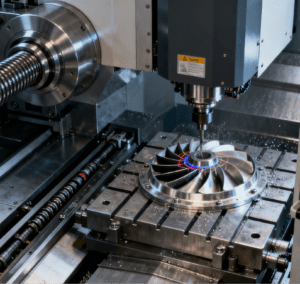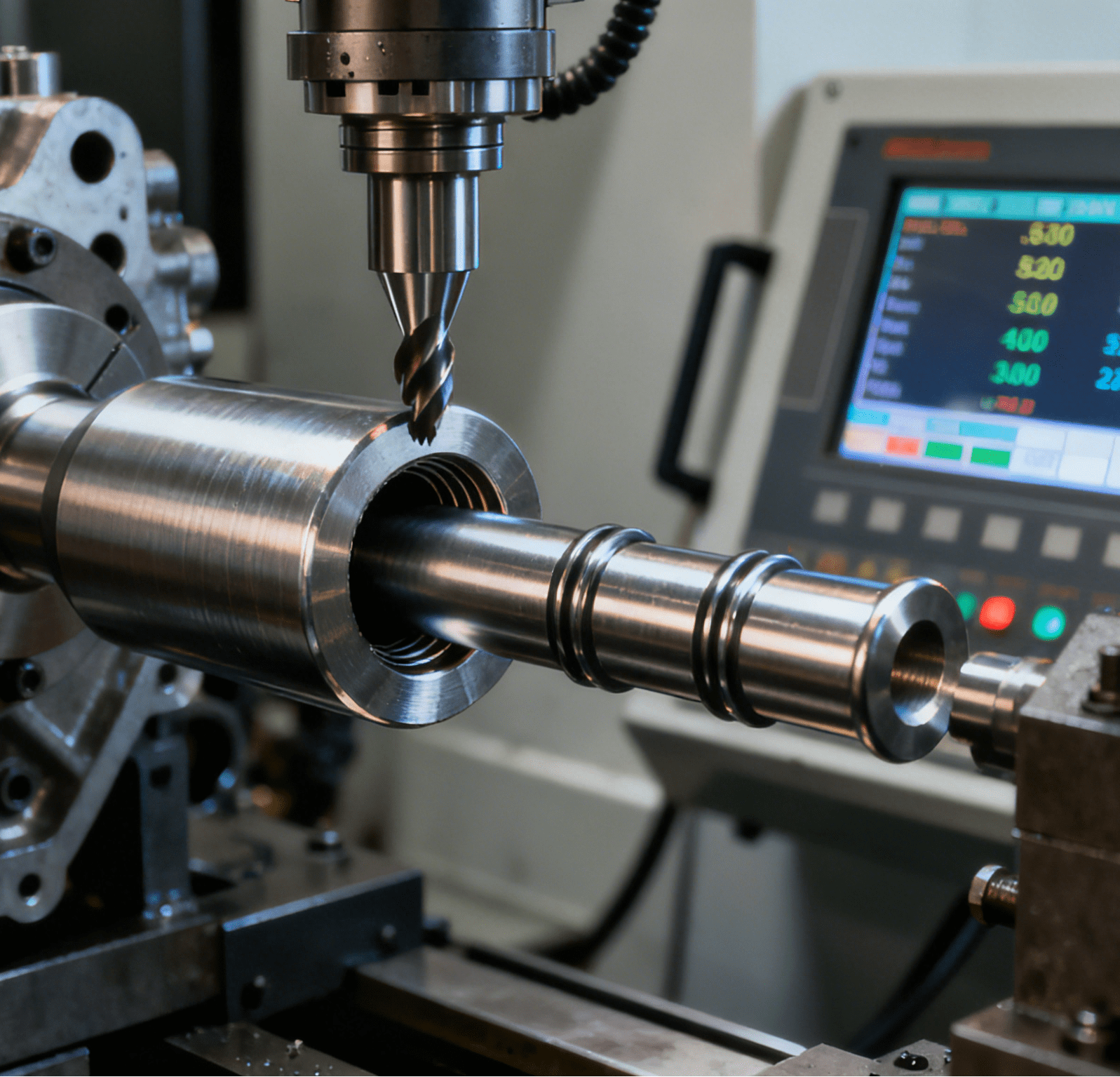
In the broad field of mechanical machining, precision CNC electrochemical machining (ECM) is emerging as a new method, opening up a brand-new path for the machining of parts with complex shapes.
Traditional Machining Challenges and the Core Principle of Precision CNC ECM
Traditional mechanical machining often faces numerous challenges when dealing with parts that have complex internal structures, high-precision requirements, and are made of special materials. For example, some aerospace components have complex shapes and are made of difficult-to-machine materials. Using conventional cutting methods not only results in low machining efficiency but also easily causes issues such as machining stress, deformation, and severe tool wear. In contrast, precision CNC electrochemical machining operates based on a unique principle. It utilizes electrochemical reactions: the workpiece acts as the anode, and the tool electrode as the cathode. A specific voltage is applied between them, causing ions in the electrolyte to move directionally under the influence of the electric field, thereby dissolving and machining the workpiece. This non-contact machining method avoids mechanical cutting forces between the tool and the workpiece, significantly reducing the likelihood of stress and deformation during the machining process.
Key Technical Pillars: CNC System & Electrolyte Management
In precision CNC electrochemical machining, the CNC system plays a key commanding role. Through precise programming, it can accurately control the movement trajectory of the tool electrode relative to the workpiece, machining speed, and electrochemical parameters. This makes it possible to machine parts with complex shapes. For instance, when machining parts with complex curved surfaces and tiny internal channels, CNC electrochemical machining can, according to a pre-set program, make the tool electrode perform electrochemical reactions along a complex path, gradually shaping the desired form. Taking turbine blades of aero-engines as an example, the internal cooling channels of these blades have complex shapes and high-precision requirements. Precision CNC electrochemical machining can effectively machine these cooling channels without damaging the overall structure of the blades, ensuring the blades’ normal working performance in high-temperature and high-pressure environments.
The selection and control of the electrolyte are also crucial links in precision CNC electrochemical machining. Different workpiece materials and machining requirements call for electrolytes of different compositions and concentrations. A suitable electrolyte can ensure the efficient progress of electrochemical reactions while avoiding unnecessary corrosion or other adverse effects on the workpiece. For example, for aluminum alloy workpieces, an alkaline electrolyte containing specific additives may be used to achieve a stable electrochemical machining process. Moreover, during the machining process, parameters such as the electrolyte’s temperature and flow rate need to be precisely controlled to ensure the consistency and stability of machining.

Advantages, Limitations and Industrial Value of Precision CNC ECM
The advantages of precision CNC electrochemical machining are also reflected in its ability to handle difficult-to-machine materials. For some alloy materials with high strength, high hardness, and high toughness—such as titanium alloys and nickel-based alloys—traditional cutting machining is extremely difficult. However, electrochemical machining can leverage the electrochemical dissolution characteristics of these materials in the electrolyte to machine them relatively easily. This is of great significance in high-end manufacturing fields such as aerospace and medical devices, as it can meet the manufacturing needs of complex parts made of special materials. In practical production, precision CNC electrochemical machining systems are often equipped with Flexible automatic loading and unloading vibrators; these vibrators can flexibly adapt to workpieces of different sizes and shapes, realizing automatic feeding, positioning and unloading, which greatly reduces manual intervention, ensures the continuity of the machining process, and further improves the efficiency of mass production of complex parts.
Furthermore, with the continuous development of technology, the machining precision and surface quality of precision CNC electrochemical machining are constantly improving. By optimizing electrochemical machining process parameters, improving tool electrode design, and adopting advanced online detection and feedback technologies, machining precision can be controlled within the micron range or even smaller, while achieving excellent surface roughness. For example, in the manufacturing of some precision molds, precision CNC electrochemical machining can create high-quality textures and fine structures on the mold surface, enhancing the mold’s performance and service life.
However, precision CNC electrochemical machining is not without flaws. It requires relatively complex equipment and process control systems, and has high requirements for the technical level and professional knowledge of operators. At the same time, the treatment and recycling of electrolytes are also environmental protection issues that need attention. Nevertheless, with the advancement of science and technology, these problems are gradually being solved.
As an emerging type of mechanical machining, precision CNC electrochemical machining, with its unique machining principle and ability to handle complex shapes and difficult-to-machine materials, demonstrates great potential in the high-end manufacturing field. It injects new vitality into the development of mechanical machining technology and is expected to play a more important role in future industrial manufacturing.
Subheading Design Explanation
- Logical Coherence: The three subheadings correspond to the core logic of the article: “Problem Presentation & Principle Explanation” (Chapter 1 covers traditional machining pain points and ECM core principles), “Core Technical Support” (Chapter 2 focuses on CNC system control and electrolyte management, the two key guarantees for machining quality), and “Comprehensive Value Evaluation” (Chapter 3 integrates advantages, limitations and industrial application value), forming a complete “problem-solution-value” chain.
- Professional Conciseness: Adopting the structure of “modifier + core noun”, such as “Key Technical Pillars” and “Industrial Value”, which is consistent with the concise and precise expression style of English technical articles. Abbreviations like “ECM” are used to align with the professional habits of the field.
- Layer Clarity: Uniformly using level 2 headings for main subheadings and level 3 heading for design explanation, with standardized formatting. Readers can quickly grasp the article’s framework and locate key content such as principles, technologies and values.




















